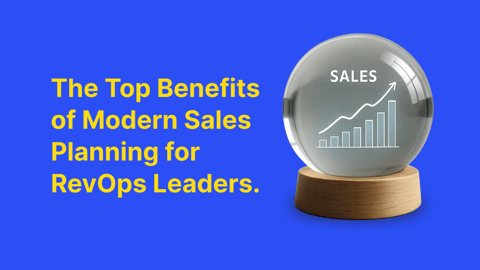As Chief Marketing Officer at Varicent, I frequently have the chance to speak with sales and revenue leaders about their challenges with existing planning and performance management solutions. A recent customer conversation crystallized what we hear when we talk to customers trying to use FP&A platforms for sales planning: the promise often falls short of reality.
The True Cost of "Connected" Planning
One of our new customers, a financial services company, recently shared their journey away from a well-known enterprise planning solution. Their story will likely resonate with many organizations:
The organization had invested over $1 million in their previous solution, but the hidden costs were even greater. Specialized model builders were needed to implement every substantial change. What was positioned and sold as “connected planning” actually required extensive coding and API work to achieve basic integration. The promised agility never materialized.
Common Warning Signs
Are you experiencing any of these red flags with your current planning solution?
1. Specialized Skill Dependencies
- Every model change requires technical resources
- Simple updates take weeks due to reliance on expert model builders
- Knowledge is concentrated with a few key personnel, or is outsourced to experts
2. False Promises of Flexibility
- Setup requires extensive custom coding, as does ongoing maintenance.
- API integration is more complex than advertised
- Changes to business rules require IT involvement. This ends up restricting business decision-making to what is implementable in the tech stack.
3. Mounting Hidden Costs
- Ongoing technical training and certification
- Additional consulting fees for model changes
- Increasing headcount for system maintenance
The Challenge of Using Finance Software for Sales Planning
One of the obstacles to replacing legacy planning systems is their deep entrenchment within finance and operational planning processes. This can make it difficult to build out a robust sales planning operation, as the assumption is that doing so will disrupt other functions.
The reality is that separating SPM models from FP&A models typically causes no pain to the business. In fact, it usually makes things easier! Even if Finance is a key stakeholder in the planning process and the business and financial targets are initially set by Finance, Sales planning is its own entity and function. Solutions like Varicent have successfully replaced legacy sales planning systems while keeping existing financial planning solutions in place. Systems integrators and solution providers with specialized sales planning practices have achieved this in as fast as a few months by leveraging automated tools to facilitate the process, combining technology with strategic change management to ensure a smooth transition.
The Path to a Modern Sales Performance Management System
While replacing an entrenched planning system can seem daunting, the benefits of modern SPM solutions are compelling:
- True business user empowerment, without coding
- Genuine no-code/low-code flexibility
- Purpose-built sales performance capabilities
- Reduced total cost of ownership
Overcoming Implementation Challenges
So how do successful teams manage this kind of migration? In my experience, teams that do this best tend to take special care when addressing these three areas:
1. Data Migration
Most successful teams start with a clear data mapping strategy. During the transition, they maintain parallel systems, in case anything breaks. Finally, as they’re nearing the endpoint, they validate the accuracy of all historical data before committing to the new system.
2. Process Continuity
Moving a whole team onto a new system can be daunting. The teams who do it best phase the implementation by component, to ensure nothing breaks along the way. They train all users comprehensively – admins and reps. Most importantly, they make sure commission payments remain uninterrupted throughout the transition.
3. Change Management
Here the usual rules apply: Build internal champions across departments. Create a compelling vision for improvement. Document clear ROI metrics and gauge effectiveness according to them.
Real Results
Organizations that have made the switch report significant reduction in time spent on system maintenance, and faster implementation of compensation changes. We've seen significant decreases in technical resource requirements.
On average, we've seen full ROI achieved within 18 months.
Taking the First Step
The journey to a truly flexible sales performance management system starts with an honest assessment of your current situation. Ask yourself:
- What percentage of your sellers are achieving quota today, and how effectively is the overall sales budget being utilized ?
- How much are we spending on specialized technical resources?
- What's the true cost of delayed changes to our sales plans?
- How quickly can we actually pivot when market much business agility are we sacrificing?
Ready to explore what modern sales performance management could mean for your organization? Contact us to learn how other companies have successfully made the transition.




